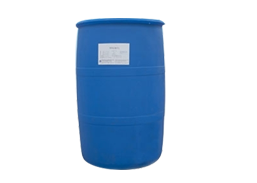Cosmetic surfactants are newly developed in recent years. They have higher and stricter requirements for products, such as anti-aging, skin moisturizing, wrinkle removing, whitening and so on. The active ingredients of cosmetics affect the metabolism of the body after being absorbed by the skin to achieve real beauty. The effect should be felt or seen. Sodium pyrrolidone carboxylate (PCA) is a natural moisturizing factor of cosmetics, which has the effects of anti-aging and wrinkle removal. Therefore, PCA is widely used in high-grade cosmetics. Surfactant as emulsifier is very important in emulsion application of cosmetics, mainly concentrated on non-ionic surfactant and polymer emulsifier. Cosmetic emulsion includes double emulsion. W/O, O/W, liquid crystal phase, multiple emulsion; W/O/W, O/W/O, microemulsion and so on. The main products are facial cleanser, moisturizer, cleaning milk, etc. There will be new products coming out in this field.

Hard water resistance and good washing effect at low temperature. Concentrated surfactant washing products are a development direction, including concentrated washing powder and concentrated liquid detergent. Obviously, saving packaging, reducing freight and occupying less land are good for environmental protection, manufacturers and consumers. At present, some developed countries have vigorously promoted and achieved results, and Chinese manufacturers are also working in this direction. Washing at room temperature is a common requirement of consumers. This problem has not been solved in China. For example, the washing effect of cold water is not as good as warm water, and warm water is not as good as hot water. Although this is common to users, it should be a problem to be solved for manufacturers and scientific research departments.
Surfactants are a large class of substances. According to statistics, there are more than 1000 kinds. In the future, new varieties will be developed, and more than 150 kinds are commonly used. They are closely related to our lives, affecting and changing our lives.
The classification code of sodium tripolyphosphate is gbl5.003, ins451 (I). Chemical structure: This product is a kind of amorphous water-soluble linear polyphosphate, terminated with na2po4 at both ends, chemical formula na5p3 O10, relative molecular weight 367.86. It is commonly used in food as water retention agent, quality improver, pH regulator and metal chelator.
Surfactant not only brings great convenience to people's life and industrial and agricultural production, but also pollutes our environment. This is a worldwide problem, especially in China. The solution is related to whether China can take the road of sustainable development. According to relevant reports, water pollution in China's rivers and lakes, such as Huaihe River, Liaohe River, Songhua River, Chaohu Lake, Taihu Lake and Dianchi Lake, has directly affected people's lives. Among them, the pollution of Dianchi Lake has been proved to be caused by the extensive use of phosphorus containing detergent by residents, the water quality is seriously eutrophic, and the clear and transparent lake water becomes black and smelly. Sodium tripolyphosphate (na5p3o10) is a common detergent aid. It can form water-soluble complexes with calcium, magnesium and iron plasma to soften water. It can also have a strong buffer effect in the range of pH = 4.3 ~ 14, adjust pH value and ensure washing effect. If it is not for pollution, it is an ideal detergent. In order to change this situation, the environmental protection department has taken measures to limit the production and sales of phosphorus containing detergents.
Surfactants should be easily biodegradable, renewable raw materials, widely used, no pollution to the environment, safe and mild to human and livestock. Long chain alkyl polyglycosides (APG) and straight chain sodium dodecylbenzene sulfonate (LAS) are two promising surfactants. APG is a newly developed surfactant with renewable raw materials and good biodegradability. Las is an old product. Recent research has proved that the biodegradation degree is 98% after treatment in the wastewater treatment plant, which meets the requirements of environmental protection.
Surfactants should be efficient and multifunctional. In addition to cleaning, they should also have the functions of bacteriostasis, sterilization and moisturizing skin, and new uses should be continuously developed.